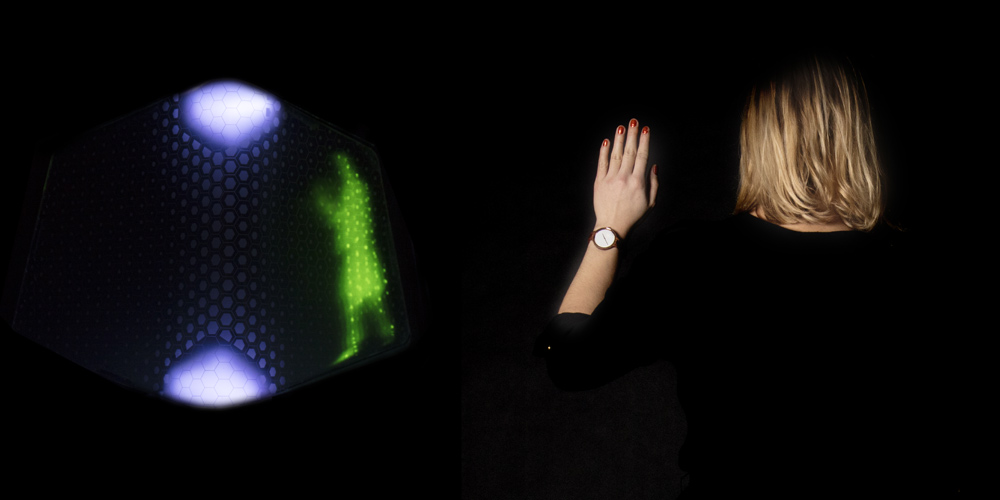Honorary Mention
Autonomous vehicles create the opportunity to redefine the relationship between pedestrians and vehicles in the city of the future. While infrastructure exists to balance the power between pedestrians and vehicles, much of the current infrastructure is built around the needs of the vehicle. Besides the potential of autonomous vehicles to cause far less accidents and fatalities in the urban environment, their arrival also provides an opportunity to rebalance the power dynamics and give pedestrians an equal weighting in the conversation between pedestrians and vehicles on the road. Blink is a two-way communications device that adds a human touch to this interaction with non-human drivers through a new language that communicates vehicle intent and promotes pedestrian influence on its decisions.
Blink involves material embedded into the four corners of the autonomous vehicle, which display the silhouettes of pedestrians around the vehicle to show that the vehicle has acknowledged their presence. lf the intention of the pedestrian is unclear, Blink flashes their silhouette and emits a tone to ask the pedestrian what they want to do. The pedestrian can then directly communicate their intent back to the vehicle with a gesture, to which the vehicle responds by changing the color of their silhouette to either red or green (depending on gesture and speed of the vehicle) and emitting another accompanying tone to acknowledge the pedestrian’s intent.
Blink currently learns and responds to the human gestures using a form of supervised machine learning, where there is a training dataset that teaches the system the meaning behind human gestures. The system developed allows for the training of hundreds of culture-specific gestures that would reflect the complexity of the road situation across different localities. By developing this new common language and standard of trust between people and autonomous vehicles, where pedestrian presence and intent is communicated and acknowledged, Blink can encourage a more empathetic manifestation of autonomous technology to create a safer and more pleasant urban environment for all road users.
Credits
The idea behind Blink comes from a cross-disciplinary team of four masters students of the Innovation Design Engineering MA/MSc Programme at the Royal College of Art and Imperial College London: Adam Bernstein (US) has a background in Electrical Engineering, with experience in the foundation of electric vehicle infrastructure. Raunaq Bose (UK) has a background in Mechanical Engineering, with experience in bringing products from the conceptual stage to market. Leslie Nooteboom (NL) has a background in Industrial Design Engineering, with experience in robotics and the building of a solar-powered racecar. Maya Pindeus (AT) has a background in Architecture, with experience in human-machine interactions.
Jury Statement
Autonomous cars, drones, and other moving things will enter the public spaces in the next decade. While the public is informed mostly about the engineering progress, the task of integrating these things into our (human) way of cooperating with each other is rarely addressed. With Blink, four students are suggesting a communication device that encourages the development of a” Language for Autonomous Vehicles”. The proposed system would communicate the intent of the vehicle while allowing pedestrians to influence its decisions. The jury wanted to further encourage this fresh approach towards intuitive interaction with autonomous, mobile machinery.



